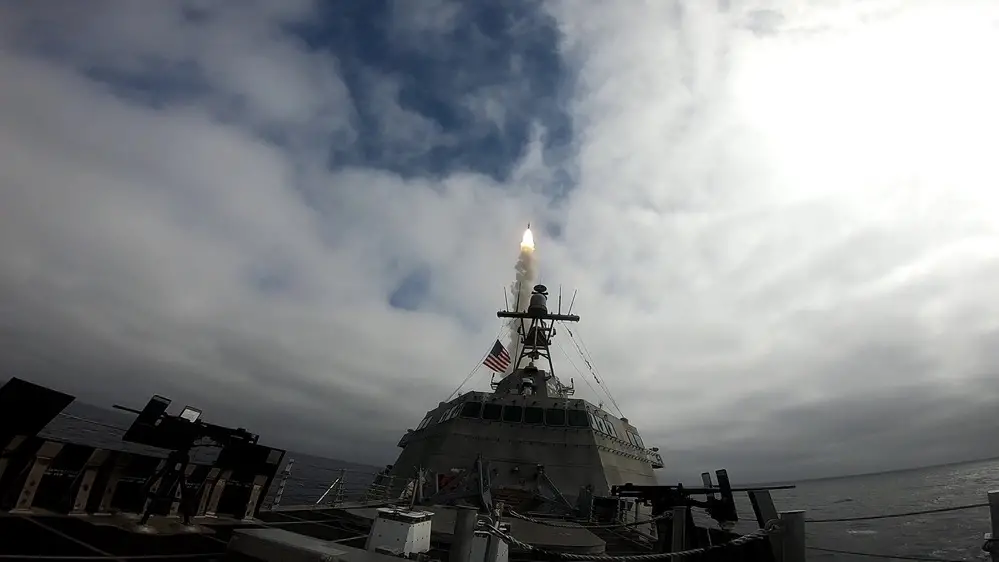U.S. Navy USS Savannah (LCS 28) conducted a live-fire demonstration Oct. 24 in the Eastern Pacific Ocean utilizing a containerized launching system that fired an SM-6 missile at a designated target. The exercise demonstrated the modularity and lethality of Littoral Combat Ships and the ability to successfully integrate a containerized weapons system to engage a surface target. The exercise will inform continued testing, evaluation and integration of containerized weapons systems on afloat platforms. USS Savannah (LCS-28) is an Independence-class littoral combat ship of the United States Navy. She is the sixth ship to be named Savannah.
The U.S. Navy initially ordered two trimaran hulled ships from General Dynamics, which became known as the Independence-class littoral combat ship after the first ship of the class, USS Independence. Even-numbered US Navy littoral combat ships are built using the Independence-class trimaran design, while odd-numbered ships are based on a competing design, the conventional monohull Freedom-class littoral combat ship. The initial order of littoral combat ships involved a total of four ships. On 29 December 2010, the Navy announced that it was awarding Austal USA a contract to build ten additional Independence-class littoral combat ships.

It is the sixth ship named in honor of the city of Savannah. The second USS Savannah, a frigate, served as the flagship of the Pacific Squadron and then served in the Brazil Squadrons and Home Squadrons, 1844-1862. The third USS Savannah (AS 8) was launched in 1899 as the German commercial freighter, Saxonia. The fourth USS Savannah (CL 42) was a Brooklyn-class light cruiser commissioned in 1938. The warship served through the entire Mediterranean campaign, receiving three battle stars for service before decommissioning in 1945. The fifth USS Savannah (AOR 4) was a Wichita-class replenishment oiler commissioned in 1970.
The RIM-174 Standard Extended Range Active Missile (ERAM), or Standard Missile 6 (SM-6), is a missile in current production for the United States Navy. It was designed for extended-range anti-air warfare (ER-AAW) purposes, providing capability against fixed and rotary-wing aircraft, unmanned aerial vehicles, anti-ship cruise missiles in flight, both over sea and land, and terminal ballistic missile defense. It can also be used as a high-speed anti-ship missile. The missile uses the airframe of the earlier SM-2ER Block IV (RIM-156A) missile, adding the active radar homing seeker from the AIM-120C AMRAAM in place of the semi-active seeker of the previous design.















